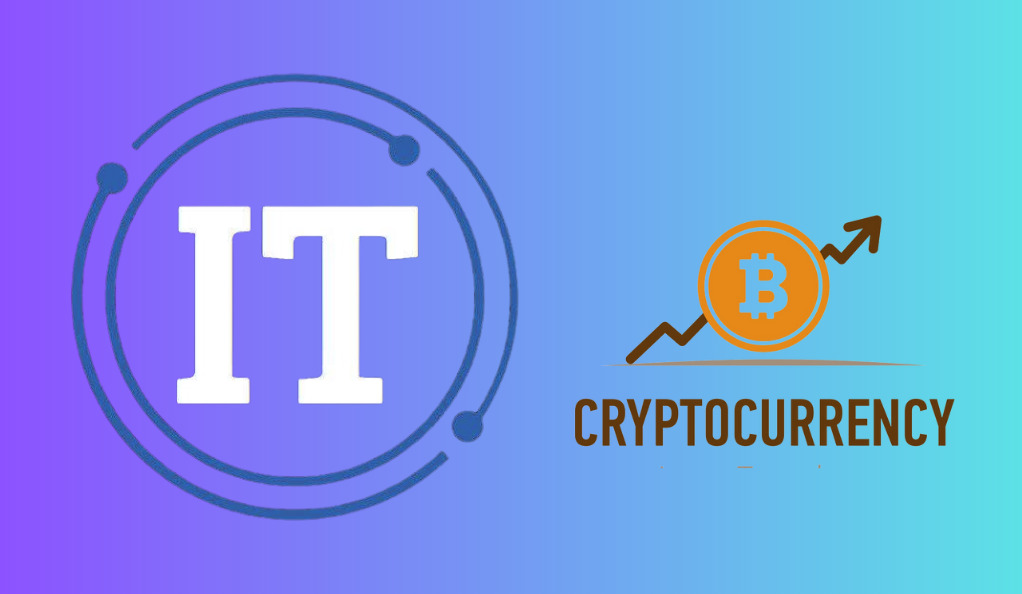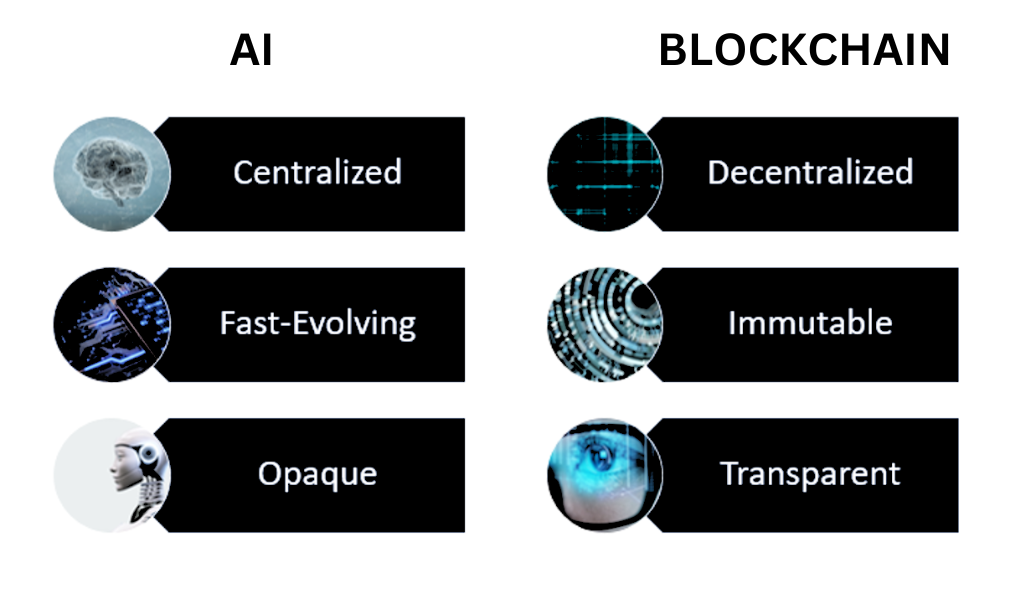Convergence of IT and Crypto Industries

In the vast realm of technology, two domains have consistently dominated headlines and discussions in recent years: Information Technology (IT) and Cryptocurrencies. While at first glance, these two might seem worlds apart, a closer inspection reveals a fascinating convergence that promises to redefine the future of digital innovation.
The Independent Journeys of IT and Crypto

- Information Technology (IT): The backbone of modern civilization, IT has been the driving force behind every major technological advancement in the last half-century. From the birth of the internet to the rise of cloud computing, IT has consistently pushed boundaries, making the world more connected and information more accessible.
- Cryptocurrencies: Born out of the 2008 financial crisis as a response to traditional banking systems, the crypto industry introduced the world to a decentralized way of handling money. With Bitcoin leading the charge, the promise of a peer-to-peer financial system without intermediaries became a reality.
The Overlapping Interests
While IT focused on data processing, storage, and transmission, the crypto industry was busy ensuring data integrity, security, and decentralization. It was only a matter of time before these two titans recognized the mutual benefits of collaboration.
Table 1: Comparative Analysis of IT and Crypto
| Feature | Information Technology | Cryptocurrency |
|---|---|---|
| Primary Focus | Data Processing & Storage | Data Integrity & Security |
| Key Innovations | Cloud Computing, IoT | Blockchain, Smart Contracts |
| Challenges | Data Security, Scalability | Adoption, Regulation |
| Opportunities | Integration with Blockchain, Enhanced Security | Wider Adoption, Integration with IT Solutions |
The Signs of Convergence
Several indicators pointed towards this inevitable convergence:
- Blockchain in IT Solutions: Many IT companies started integrating blockchain technology for enhanced data security and transparency.
- Crypto’s Reliance on IT: As cryptocurrencies gained popularity, the need for robust IT infrastructure for mining, trading, and storing became evident.
- Shared Challenges: Both industries faced challenges like scalability and security, which could be addressed more effectively together.
Historical Context
To truly appreciate the convergence of IT and Crypto, it’s essential to understand their individual histories and the milestones that have shaped their trajectories.
The Dawn of Information Technology (IT)
- 1950s – Mainframe Era: The birth of IT can be traced back to the mainframe computers of the 1950s. These massive machines, occupying entire rooms, were the pioneers of digital computation, laying the groundwork for the technological revolution to come.
- 1980s – Personal Computing: The 1980s witnessed a significant shift with the introduction of personal computers (PCs). Companies like Apple and IBM brought computing power to the masses, democratizing access to technology.
- 1990s – The Internet Explosion: The launch of the World Wide Web in 1991 was a game-changer. The internet transformed how we communicate, work, and entertain ourselves, marking the beginning of the digital age.
The Rise and Spread of Cryptocurrencies
- 2008 – The Birth of Bitcoin: In the aftermath of the global financial crisis, an anonymous entity named Satoshi Nakamoto introduced Bitcoin – a decentralized digital currency. This was the world’s first introduction to blockchain technology.
- 2010s – Altcoins and Diversification: Following Bitcoin’s success, numerous alternative cryptocurrencies (altcoins) emerged, each bringing unique features and innovations. Ethereum, introduced in 2015, expanded the scope with its smart contract functionality.
- 2020s – Mainstream Adoption: With major institutions and corporations endorsing and investing in cryptocurrencies, they transitioned from a niche market to a mainstream financial asset.
Key Milestones Hinting at Convergence
- Smart Contracts: Ethereum’s introduction of smart contracts showcased the potential of combining IT’s programmability with crypto’s decentralization.
- Decentralized Applications (DApps): These applications, running on blockchain, highlighted the fusion of traditional app development with crypto principles.
- Crypto Exchanges: Platforms like Coinbase and Binance relied heavily on advanced IT infrastructures, bridging the gap between traditional finance and crypto.
Table 2: Timeline of IT and Crypto Milestones
| Year | IT Milestones | Crypto Milestones |
|---|---|---|
| 1950s | Mainframe Computers | – |
| 1980s | Personal Computers | – |
| 1991 | Launch of WWW | – |
| 2008 | – | Introduction of Bitcoin |
| 2015 | – | Launch of Ethereum |
| 2020s | AI & Cloud Integration | Mainstream Adoption |
The Underlying Currents
While on the surface, IT and Crypto might have seemed like parallel streams, their underlying currents were always pushing them towards a confluence. The shared ethos of democratizing access, ensuring transparency, and fostering innovation made their convergence not just possible, but inevitable.
The Power Duo: AI and Blockchain
The convergence of IT and Crypto has given rise to two standout technologies that, when combined, have the potential to revolutionize industries: Artificial Intelligence (AI) and Blockchain. These technologies, while powerful on their own, become a formidable force when integrated.

Understanding AI and Blockchain Individually
- Artificial Intelligence (AI): At its core, AI is about creating machines that can think, learn, and act like humans. From chatbots to predictive analytics, AI’s applications are vast and varied. It’s the driving force behind innovations like machine learning, deep learning, and neural networks.
- Blockchain: Beyond cryptocurrencies, blockchain is a decentralized ledger technology that ensures data integrity and transparency. Its most notable features include immutability, transparency, and the elimination of intermediaries.
The Synergy of AI and Blockchain

- Data Security and Integrity: AI systems require vast amounts of data for training and decision-making. Blockchain ensures that this data is tamper-proof and verifiable.
- Smart Decision Making: AI can enhance blockchain operations by making better decisions in hashing algorithms, optimizing mining processes, and making smart contracts even smarter.
- Transparency and Accountability: AI algorithms, often criticized for being “black boxes,” can benefit from the transparency of blockchain. Every decision made by AI can be recorded and verified on the blockchain.
Real-world Applications of the Convergence
- Healthcare: AI can analyze patient data for better diagnosis and treatment recommendations, while blockchain ensures the data’s security and privacy.
- Supply Chain: AI optimizes logistics and predicts demand, while blockchain provides transparency in product origin and transportation.
- Finance: AI-driven algorithms can make better investment decisions, and blockchain ensures transparent and tamper-proof financial transactions.
Challenges and Opportunities in Integration
While the integration of AI and blockchain holds immense promise, it’s not without challenges:
- Scalability: Both AI and blockchain require significant computational power. Finding efficient ways to scale operations is crucial.
- Data Privacy: With AI analyzing data and blockchain recording it, ensuring user privacy becomes paramount.
- Interoperability: Ensuring seamless interaction between AI and blockchain systems across different platforms and standards.
However, these challenges also present opportunities. For instance, the scalability issue has led to innovations in sharding and off-chain computations.
The Road Ahead
The fusion of AI and blockchain is still in its infancy. As research progresses and industries begin to realize their combined potential, we can expect groundbreaking solutions that address global challenges, from climate change to financial inclusivity.
Conclusion
As we stand at the crossroads of technological evolution, the convergence of IT and Crypto emerges as a beacon of transformative potential. The journey, from the humble beginnings of mainframe computers and the inception of Bitcoin to the powerful amalgamation of AI and blockchain, paints a vivid picture of relentless innovation and collaboration.
This union is not merely about technological advancements; it’s a testament to human ingenuity and our relentless pursuit of creating a more transparent, efficient, and inclusive digital world. The challenges, while significant, are but stepping stones, pushing us to innovate, adapt, and evolve.
The fusion of IT and Crypto is more than just a trend; it’s the dawn of a new era. An era where data meets integrity, where algorithms intertwine with immutable ledgers, and where our digital experiences are redefined. As we continue to explore and harness this convergence, one thing is certain: the future of technology is not just bright; it’s revolutionary.
Bitcoin-up is dedicated to providing fair and trustworthy information on topics such as cryptocurrency, finance, trading, and stocks. It's important to note that we do not have the capacity to provide financial advice, and we strongly encourage users to engage in their own thorough research.
Read More